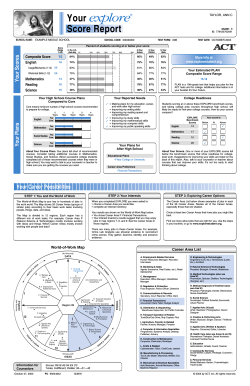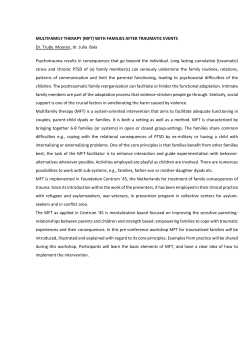
Mathematics
Find out how to prove — and improve — the effectiveness of your Mathematics program with the ETS® Major Field Tests. Content Validity The Major Field Test (MFT) in Mathematics, first administered in 1989, assesses mastery of concepts, principles and knowledge by graduating Mathematics students. To ensure fairness and content relevance, the test is revised approximately every four to five years. Developed by Leading Educators in the Field Experienced faculty members representing all the relevant areas of the discipline determine test specifications, questions and types of scores reported. ETS assessment experts subject each question to rigorous tests of sensitivity and reliability. Every effort is made to include questions that assess the most common and important topics and skills. In addition to factual knowledge, the test evaluates students’ abilities to analyze and solve problems, understand relationships and interpret material. Questions that require interpretation of graphs, diagrams and charts are included. Academic departments may add up to two subgroups and as many as 50 additional locally written questions to test areas of the discipline that may be unique to the department or institution. Who Develops the MFT in Mathematics? Individuals who serve or recently have served on the Committee for the MFT in Mathematics are faculty members from the following institutions: Agnes Scott College California State University, Bakersfield United States Naval Academy University of Arkansas University of Nebraska – Lincoln Wake Forest University National Comparative Data For more information about the MFT in Mathematics: A Comparative Data Guide, published each year, contains tables of scaled scores and percentiles for individual student scores, departmental mean scores and any subscores or group assessment indicators that the test may support. The tables of data are drawn from senior-level test takers at a large number of diverse institutions. Nearly 1,500 colleges and universities employ one or more of the Major Field Tests for student achievement and curriculum evaluation each year. Phone: 1-800-745-0269 Email: highered@ets.org Visit: www.ets.org/mft Educational Testing Service Rosedale Road Princeton, NJ 08541 Test Content — Mathematics (4IMF) The Major Field Test in Mathematics consists of 50 questions, some of which may be grouped in sets and based on such materials as diagrams and graphs. The questions are drawn from the courses of study most commonly offered as part of an undergraduate mathematics curriculum. Programs can choose when and where to administer the tests. It is designed to take two hours and may be split into two sessions. This test must be given by a proctor. Mathematical operations do not require the use of a calculator. The outline below shows the content areas covered on the test and the approximate distribution of questions among the areas. The Test Outline I. Calculus (~30%): includes the usual material from three semesters of: A.Calculus B. Single-variable calculus C.Multivariable calculus D. Separable differential equations II. Algebra (~30%) A.Linear Algebra 1. Matrices 2. Linear transformations 3. Eigenvalues and eigenvectors 4. Vector spaces 5. Systems of linear equations B. Abstract Algebra 1. Elementary theory of groups, rings and fields 2. Elementary topics from number theory The relative percentages of mathematics questions at various cognitive levels are listed below: I. Routine (~55%): Includes only two or three definitions and no more than a two-step reasoning process, or involves standard techniques normally taught and practiced extensively in a course that is generally required or strongly recommended for all math majors at most institutions. II. Nonroutine (~25%): Includes all items that are considered insightful. Also includes items that require several steps of reasoning and items that require either the use of several definitions or a new definition that the student would not be expected to know. Some questions may require bringing techniques from two or more areas to bear on one problem (e.g., treating differentiable functions as elements of an algebraic system). III. Applied (~20%): There is conceptual overlap between the cognitive-level categories of applied, routine, and non-routine. The general nature of the question will determine the category for the question. For example, all questions with real-world settings are placed in the applied category. On the other hand, questions involving standard applications of one area of mathematics to another, such as using differential calculus to solve geometric problems, would not be placed in the applied category. How scores for the Major Field Test in Mathematics are reported Total Score – Reported for each student and summarized for the group. Assessment Indicators – Reported for the group* only. III. Additional Topics (~40%) A.Complex analysis B. Differential equations C.Discrete mathematics (including graph theory and combinatorics) D.Foundations (including logic, proofs, sets, functions and relations) – Calculus (15) – Algebra (15) – Routine (27–28) – Nonroutine (12–13) – Applied (10) Numbers in parentheses are the approximate number of questions in each category. *A minimum of five (5) students is required for assessment indicators to be reported. E.Geometry F. Point-set topology G.Probability and statistics H.Real analysis Copyright © 2012 by Educational Testing Service. All rights reserved. ETS, the ETS logo and LISTENING. LEARNING. LEADING. are registered trademarks of Educational Testing Service (ETS). 20381
© Copyright 2025





















